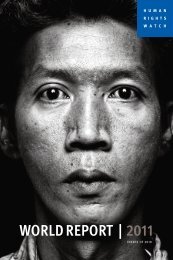SUPREME COURT OF CANADA CITATION: Alberta v. Hutterian ...
SUPREME COURT OF CANADA CITATION: Alberta v. Hutterian ...
SUPREME COURT OF CANADA CITATION: Alberta v. Hutterian ...
You also want an ePaper? Increase the reach of your titles
YUMPU automatically turns print PDFs into web optimized ePapers that Google loves.
The majority assesses the Wilson Colony members’ freedom of religion as being a choice betweenhaving their picture taken or not having a driver’s licence which may have collateral effects on theirway of life. This, with respect, is not a meaningful choice for the Hutterites.[164] The chambers judge found that the mandatory photo requirement threatened theautonomous ability of the respondents to maintain their communal way of life, concluding that “itis essential to [the respondents’] continued existence as a community that some members operatemotor vehicles” (para. 2). Conrad J.A. of the <strong>Alberta</strong> Court of Appeal similarly wrote that the“evidence shows that although the colonies attempt to be self-sufficient, certain members must driveregularly on <strong>Alberta</strong> highways in order to . . . facilitate the sale of agricultural products, purchaseraw materials from suppliers, transport colony members (including children) to medicalappointments, and conduct the community’s financial affairs” (para. 6).[165] This self-sufficiency was explained in Hofer v. Hofer, [1970] S.C.R. 958, where RitchieJ. wrote that “the Hutterite religious faith and doctrine permeates the whole existence of themembers of any Hutterite Colony” (p. 968). Quoting the trial judge, he observed: “To a <strong>Hutterian</strong>the whole life is the Church. . . . The tangible evidence of this spiritual community is the secondaryor material community around them. They are not farming just to be farming — it is the type oflivelihood that allows the greatest assurance of independence from the surrounding world” (p. 968).Justice Ritchie further noted that to the colonies, “the activities of the community were evidence ofthe living church” (p. 969).[166] Historians too have described the intensely self-sufficient and deeply religious nature
















